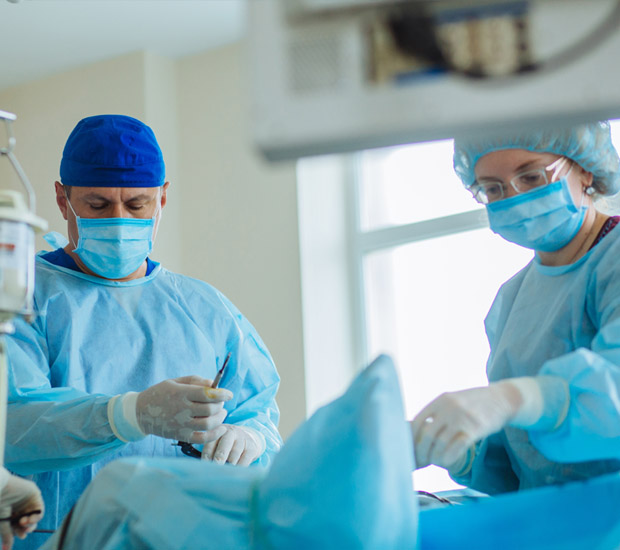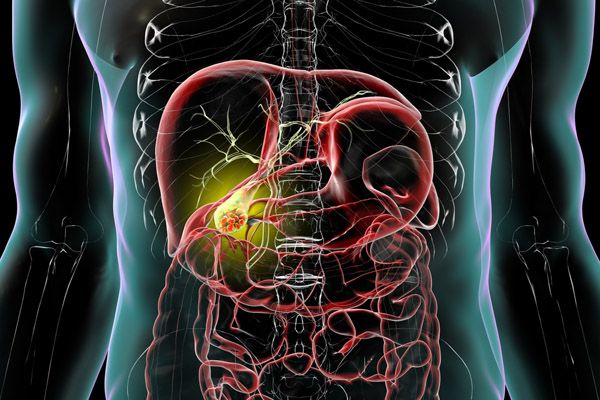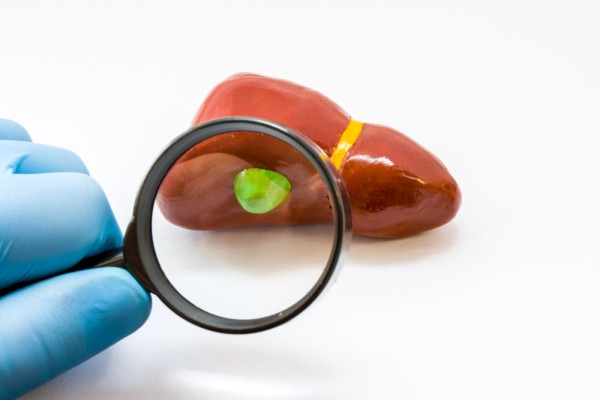LumpectomyLong Beach, CA
Lumpectomy surgery is a common breast cancer treatment. Unlike a traditional mastectomy, which removes the entire breast, this procedure removes the cancer cells and a small amount of healthy breast tissue while preserving its natural look and shape. It is commonly recommended for early-stage breast cancer or benign breast conditions.
Early-stage breast cancer and other breast issues can be scary and cause you to feel embarrassed or alone. However, we are here to make the treatment process as simple as possible. Associates in General Surgery offers lumpectomy surgery in Long Beach and the surrounding area. Call our office at (562) 362-3939 to learn more about this procedure or to schedule a consultation.
What Is a Lumpectomy?
A lumpectomy is a surgical procedure that removes a portion of breast tissue. Also known as a partial mastectomy, it is most often part of a breast cancer treatment plan. In many cases, it is often utilized during early-stage breast cancer and only removes some of the breast tissue. In contrast, a mastectomy removes the entire breast.
The goal of lumpectomy is to remove cancer from the breast. It can also remove benign tumors in the breast tissues. A healthcare provider may recommend a lumpectomy if they believe it will remove the cancer with little risk of recurrence while preserving the appearance of the breast.
“A healthcare provider may recommend a lumpectomy if they believe it will remove the cancer with little risk of recurrence while preserving the appearance of the breast.”
Who Is and Is Not Eligible For a Lumpectomy
There is a specific criteria for patients to meet to qualify for a lumpectomy. For example, if a patient has a small, early-stage breast cancer tumor that is confined to one area, they may qualify for a lumpectomy. Additionally, they will need to be able to undergo radiation therapy that reduces the risk of recurrence. The doctor will also consider the appearance of the breast, as the procedure is meant to preserve the shape and size of the breast after the cancer is removed.
However, not everyone is eligible for a lumpectomy. Factors that can disqualify a patient for this procedure include:
- A history of lupus or other medical conditions that can worsen during radiation therapy
- A history of scleroderma, which can interfere with the healing process
- A genetic mutation that increases the risk of the cancer recurring
- Large or multiple tumors in different parts of the breast
- Inflammatory breast cancer
- Prior history of breast radiation
Associates in General Surgery works with each of our patients to ensure that they qualify for a lumpectomy and that the process is safe from the initial consultation to the recovery from the procedure.
“There is a specific criteria for patients to meet to qualify for a lumpectomy.”
Types of Lumpectomy Procedures
There are several types of lumpectomy procedures. These include:
- Excisional biopsy.This is a diagnostic procedure. The surgeon removes the tumor as part of a biopsy that will be tested to determine if the tumor is cancerous or benign.
- Wide local excision.This surgery removes the tumor and a small amount of nearby healthy tissue. A pathologist will then test the margin to ensure there is no presence of cancerous cells, which means the procedure successfully removed the cancer.
- Quadrantectomy.A quadrantectomy removes about a quarter of the breast, including the tumor, a margin of healthy nearby tissue, and the milk ducts.
- Re-excision of margins. If the test results from the initial procedure show signs of cancer cells in the healthy tissue margins, the surgeon will need to reopen the surgical site and remove additional tissue to ensure all of the cancer cells have been removed.
The type of lumpectomy procedure used will depend on the stage of the patient’s treatment plan and the size of their tumor.
“The type of lumpectomy procedure used will depend on the stage of the patient’s treatment plan and the size of their tumor.”
Check out what others are saying about our services on Yelp: Lumpectomy in Morgan Hill, CA
What to Expect From a Lumpectomy
During a lumpectomy, the medical team will place the patient under general anesthesia to ensure they remain comfortable during the procedure. The breast may also be numbed with a local anesthetic to reduce postoperative pain. The average lumpectomy procedure takes approximately one hour to complete.
Dr. Jeffrey Islas, MD, will make an incision over or near the tumor, carefully removing the cancer cells with a small margin of surrounding healthy tissues. The surgeon will often place small marking clips in the surgical area to guide radiation treatment. In some cases, nearby lymph nodes — typically the armpit area — may also be removed for additional evaluation. This is known as sentinel node biopsy (SNB) or axillary lymph node dissection (ALND).
Finally, the surgical team will close the site with dissolvable sutures and apply a dressing to protect the area against infection during the initial healing process. Depending on the extent of the surgery, the doctor may recommend a surgical drain to remove excess fluid from the surgical site. This is a small, flexible tube made of plastic or rubber that drains fluid from the area as it heals.
“Dr. Islas, MD, will make an incision over or near the tumor, carefully removing the cancer cells with a small margin of surrounding healthy tissues.”
Aftercare
Most patients fully recover from a lumpectomy two weeks after the procedure. They may feel tired and experience pain, swelling, and bruising in the treatment area. Typically, the symptoms will improve on their own in the days following the surgery. In many cases, patients can manage most discomfort with over-the-counter medication.
We will provide instructions on what patients should and should not do during the recovery process. These instructions may include not lifting anything heavy or avoiding exercise until after a certain period. The doctor may also recommend that patients shower instead of taking a bath. It is important to follow these instructions closely to avoid potential risks and complications.
In the days following surgery, a pathologist will to examine the abnormal tissueconfirm that the entire tumor was removed and evaluate the margins. If the pathologist finds cancer cells close to the edge of the removed tissue, the doctor may recommend that the patient undergo another surgery. Our team will work with the patient’s other healthcare providers to determine whether they need additional treatments like radiation therapy to reduce the risk of the cancer recurring.
“Most patients fully recover from a lumpectomy two weeks after the procedure.”
Questions Answered on This Page
Q. Who should get a lumpectomy?
Q. Are there different types of lumpectomy procedures?
Frequently Asked Questions About Lumpectomies
Q. What is the difference between a lumpectomy and a mastectomy?
A. A lumpectomy removes only the tumor and a small area of healthy tissue, while a mastectomy involves removing the entire breast. Many patients will follow up with a lumpectomy with radiation therapy to lower the risk of cancer reoccurring. Healthcare providers may recommend a mastectomy if the tumor is large or if there are multiple tumors in different areas of the breast tissue.
Q. What are the risks and complications after undergoing a lumpectomy?
A. As with any surgical procedure, there are risks associated with a lumpectomy, including infection, bleeding, and scarring. There may also be temporary changes in the shape of the breast or abnormal sensations. Most mild complications are manageable with appropriate aftercare. If you experience any adverse effects after your lumpectomy, please call our office to schedule a follow-up appointment.
Q. How does the breast tissue change after a lumpectomy?
A. Some patients may notice a change in the shape of the treated breast, particularly if a large amount of tissue is removed. However, Dr. Islas, MD, aims to preserve the breast’s natural appearance with minimally invasive surgical techniques and precision. Call our office if you would like to learn more about what to expect after a lumpectomy.
Q. How effective is lumpectomy in treating breast cancer?
A. According to a 2021 study published in JAMA Surgery, the overall survival rates of nearly 40,000 women diagnosed with early-stage breast cancer were higher for those who had lumpectomy and radiation than for those who had mastectomy with or without radiation. Regular follow-up care is important to monitor for recurrence and maintain long-term health. While Associates in General Surgery does not offer radiation therapy, we strive to offer our patients comprehensive care to improve their health and overall quality of life.
Q. What happens if the surgery does not provide clear margins?
A. We aim to provide clear margins. However, if the initial lumpectomy resulted in cancer cells close to the edge of the removed tissue (positive margins), the doctor may need to perform another surgery to remove additional surgery. He will discuss the pathology results with you and determine your next steps to best benefit the treatment process and overall health outcomes.
Call Our Office to Learn More
The Associates in General Surgery team understands that going through a breast cancer diagnosis is difficult. We offer lumpectomy surgery in the Long Beach area and are here to support you through your treatment journey. Reach out to our office at (562) 362-3939 to learn more or to schedule a consultation.
Contact Us
Associates in General Surgery is located at
701 E 28th St Ste 117A
Long Beach, CA 90806





